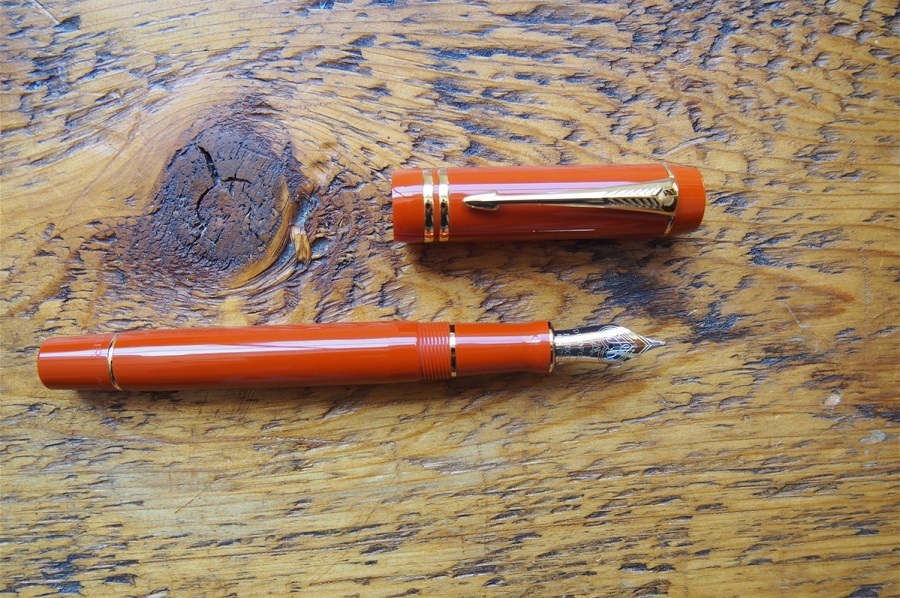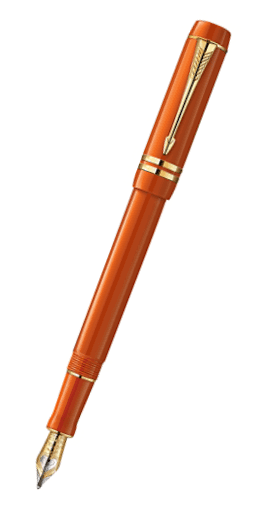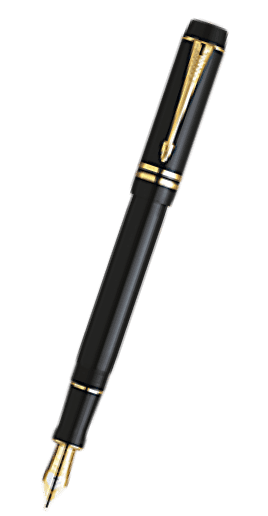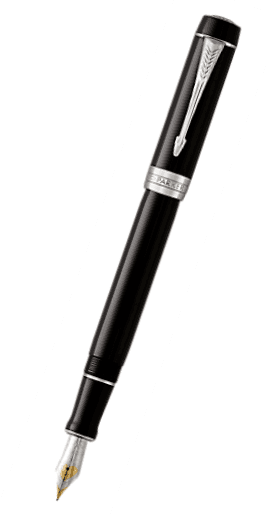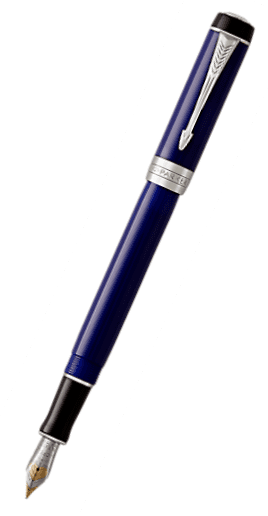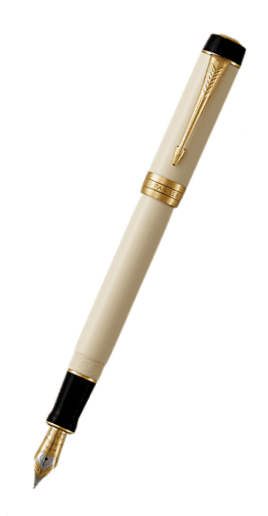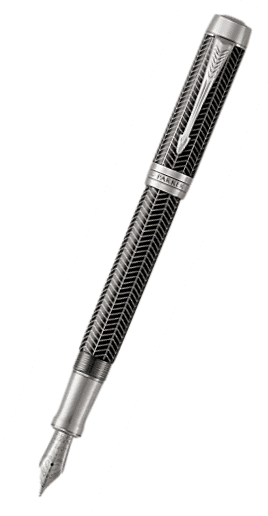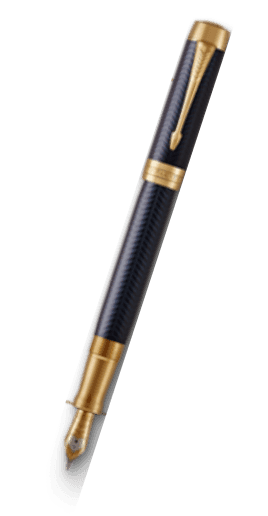Have you been searching for the great “white whale” of fountain pens: the Parker Duofold Centennial?
Like Moby Dick, the legendary Parker Duofold Centennial exemplifies strength and power. It’s a pen that everyone knows, many yearn to own, and only those deemed the mightiest can harness it.
Once captured, this alluring pen is one that every writer is proud to display in their collection.
With a deep-rooted history, the majestic Parker Duofold Centennial is everything that a fountain pen should be. Attaining this elusive fountain pen is the highest accomplishment and shows that you’re a true fountain pen connoisseur.
This post contains affiliate links. See our disclosure page for more information.

Parker Duofold History
In 1921, the Parker Duofold made its mark. The first model was considered to be of substantial size for its time - 5.5 inches while capped. Made of unprecedented, vibrant red rubber, this was a fountain pen that stood out amongst the mundane black-barreled models of the time. The original Duofold was only available in one size, the Senior Duofold (though now more commonly known as “Big Red”). When introduced, the Parker Duofold was priced at $7 - almost twice the price of most pens on the market. The reception was initial apprehension. However, it was soon quieted, as the Duofold became the writing instrument of choice in the 1920s.
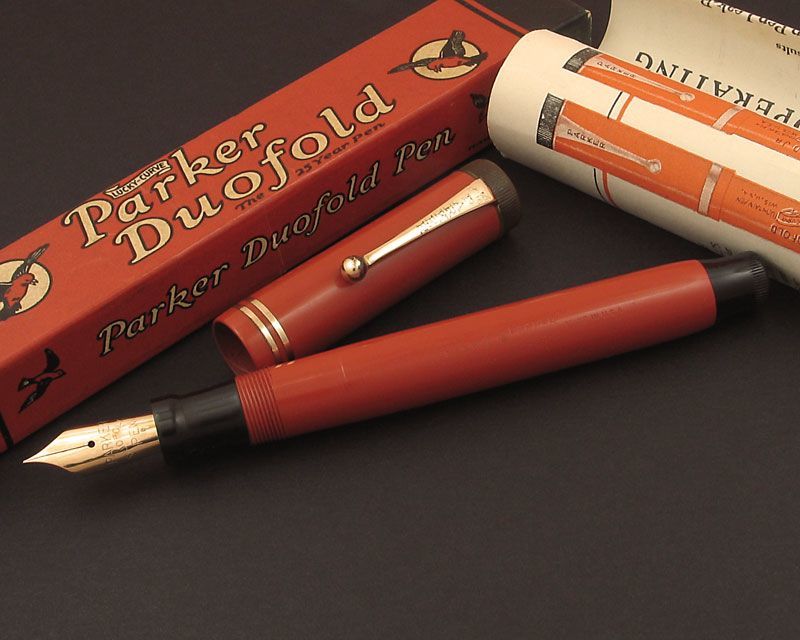
1921 Duofold “Big Red” (Source: penhero.com)
Until 1926, this pen was only available in black and its signature red rubber. New hues were introduced later, including Jade Green, Lapis Blue, and Mandarin Yellow. Throughout the years, Parker has continued its innovation through multiple versions of the Duofold.
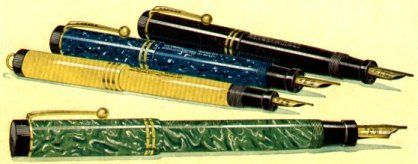
The four original colors of the Parker Duofold (public domain)
Parker Duofold Centennial History
Immediately following the United Kingdom division takeover in 1987, the new chief executive officer, Jacques Margry, wanted to commemorate the company’s centennial celebration. Designated as the flagship of the jubilee, the regal Duofold Centennial series of pens was released in 1988. The design was reminiscent of the 1920s Duofold - the one that built the Parker company. Instead of being made from the original rubber material, the Centennial was formed using acrylic. The Centennial series included fountain pens, rollerballs, and pencils in marble maroon, marble blue, and black. The classic trademark terra cotta color came later.
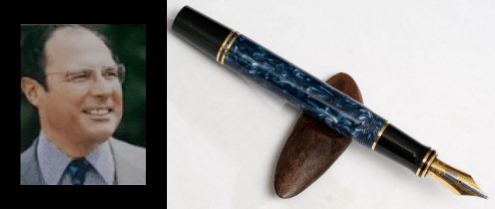
In 1987, CEO Jacques Margry commemorated Parker's centennial with the Duofold Centennial, as seen on the right. (Sources: moreenginnering.co.uk, fountainpennetwork.com)
Almost one year after the Centennial release, Parker introduced the International line of Duofolds on April 1, 1989. They were reminiscent of the classic Duofold design, but were slimmer than their cousin, the Centennial.
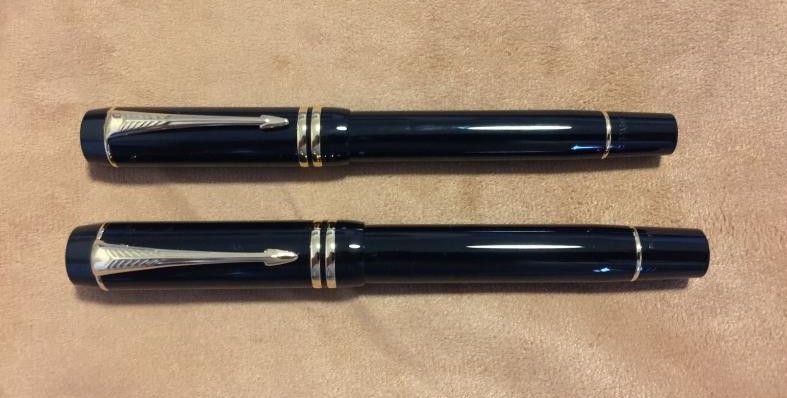
A comparison of the Duofold models. The thinner International is at the top and larger Centennial is at the bottom. (Source: fountainpennetwork)
Parker Collection Releases
In the years that followed, minor adjustments and specialized limited edition Duofolds have been added. Since the creation of the Parker Duofold Centennial size, most releases have been offered in this larger model.

The Parker Duofold Centennial Presidential (Source: parkerpens.net - a Parker Pen Co. UK subsidiary)
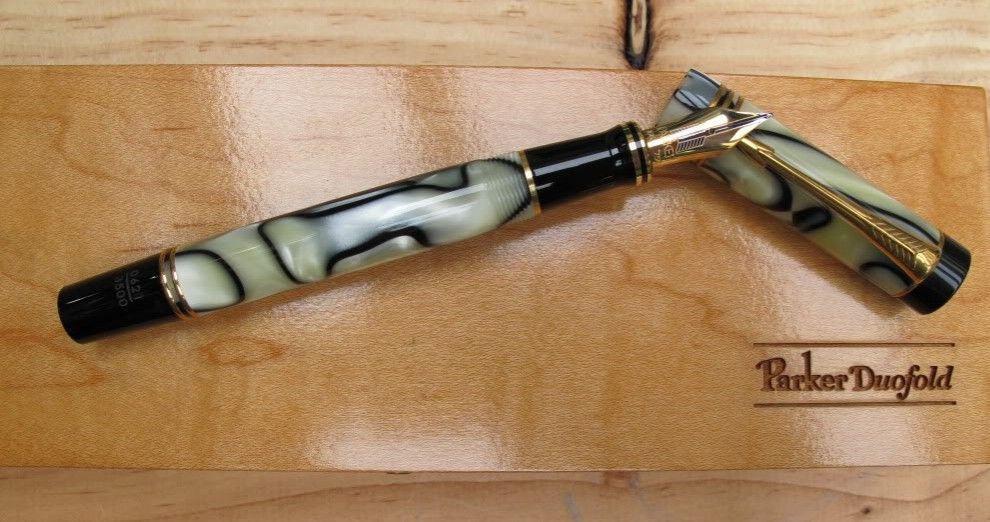
The Parker Duofold Norman Rockwell Limited Edition (Source: fountainpennetwork)

The 125th Anniversary Parker Duofold in Mandarin Yellow (source: fountainpennetwork)
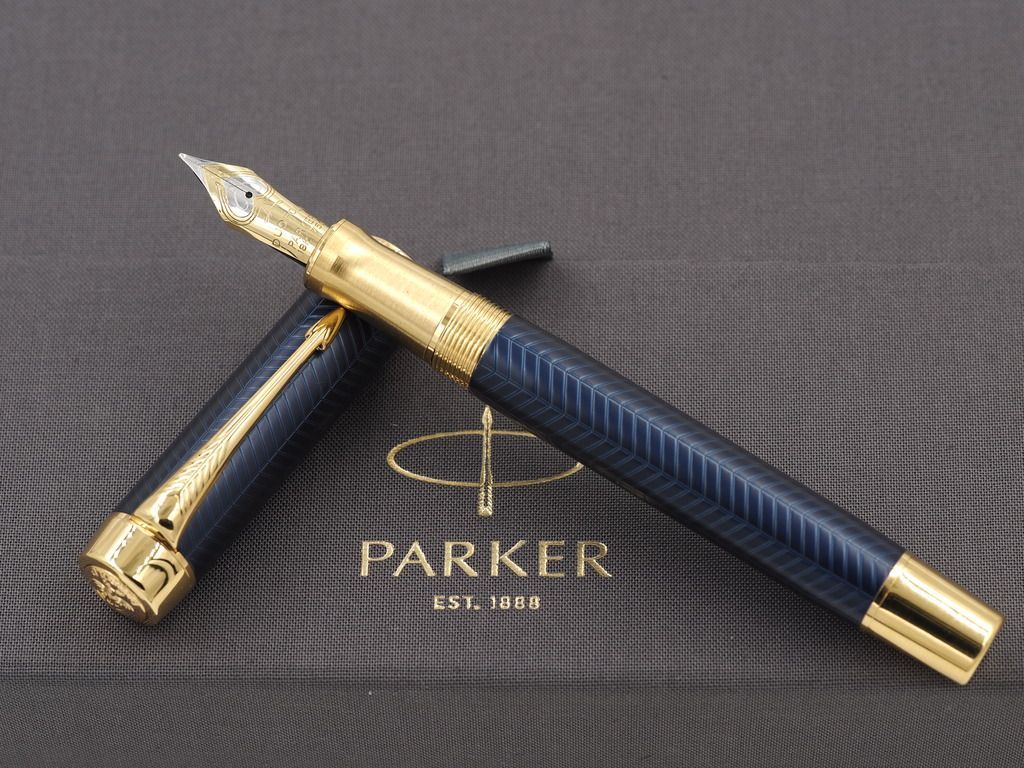
Parker Duofold Prestige in blue chevron (Source: fountainpennetwork)
Parker Duofold Makes Its Mark
The Parker Duofold Centennial has been the chosen pen of famous dignitaries, notables, and heads of state throughout its history.
Parker Duofold Centennial’s Iconic Design
Finding a vintage or limited edition Duofold model can be challenging. However, collectors don’t need to hunt for hours in search of a quality Centennial model. The versions readily available on the market today are the Parker Duofold Centennial Classic and Parker Duofold Centennial Prestige fountain pens.
A True Masterpiece
Though it has seen numerous remodels, strong and powerful design supported by superior craftsmanship has been the basis of every Duofold pen. Each pen is precisely constructed and finished by hand. The Centennial is expertly formulated from 21 individual pieces, manually polished, and assembled to create this coveted treasure. The Duofold Centennial is available in a variety of colors and trims.
Note: Mobile users, please scroll right to view the entire table.
Image | Model | Body Material | Trim Material | Nib Finish |
|---|---|---|---|---|
Resin | Palladium | Rhodium-plated | ||
Resin | 23k gold-plated | Rhodium-plated | ||
Resin | Palladium | Rhodium-plated | ||
Resin | Palladium | Rhodium-plated | ||
Resin | 23k gold-plated | Rhodium-plated | ||
Metallic Lacquer & Varnish | Ruthenium | Ruthenium-finished | ||
Metallic Lacquer & Varnish | 23k gold-plated | Rhodium-plated | ||
Metallic Lacquer & Varnish | Palladium | Rhodium-plated | ||
Ruthenium | Palladium | Rhodium-plated |
- Palladium is a silver metal that resembles platinum. It is the least dense out of the three.
- Ruthenium is a silvery white metal and does not tarnish unless subjected to high temperatures.
- Rhodium is one of the rarest and most valuable precious metals.
- All three are a silvery white color, belong to the platinum family, and are inert to most chemicals.
One solid block of hand-cast acrylic is used to create a gorgeous, deep gloss on the Classic models. The precious resin of this pen feels warm and sleek in the hand without being slippery. Each Classic barrel is topped with a gold ring and flat, black end cap.
The Prestige range is constructed of metal lacquer and consummated with an impeccable, laser-etched chevron or chiseled pattern. The barrel end is finished with the same palladium, gold-plating, or ruthenium trim material as the rest of the pen model. Though formed from metal, the Prestige line does not add weight to the writer’s hand.
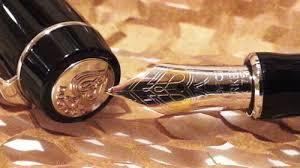
The trademark Parker ace of spades (Source: fountainpennetwork.com)
The tapered cap is topped with a finial, featuring the trademark Parker ace of spades medallion. Moving down the cap, the base is completed with a ring made of the same material as the pen’s trim. Etched with the Parker name and logo, the ring seamless divides the barrel’s appearance, whether posted or capped. The threads require minimal effort to twist when removing or capping this pen. Every Duofold cap features the Parker signature arrow-shaped clip.
Hand-Crafted Nib
The 18k solid gold, hand-polished nib endures 21 production stages before being affixed to a fountain pen. Nibs are available in fine or medium sizes. As is common with the Parker fountain pens, the Duofold is embellished with the two-toned signature ace of spades design. Depending on the pen choice, nibs are either rhodium-plated or ruthenium finished. In case you have a change of heart, Parker offers a free nib exchange within the first 28 days of pen ownership. Provided it's undamaged, your nib can be sent in and traded for another one of equal value.
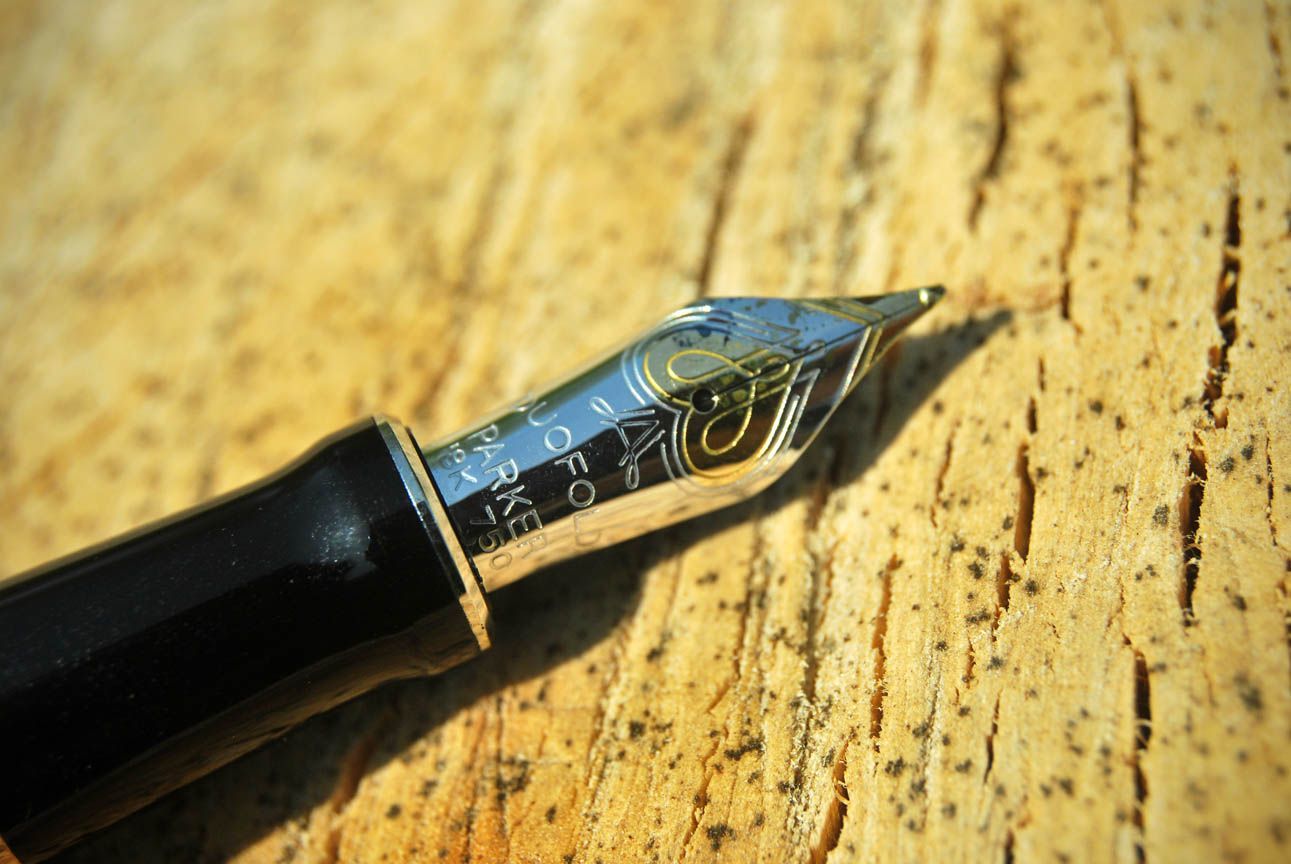
Ace of spades nib (Source: fountainpennetwork.com)
Putting the Pen to Paper
In the hand, the Parker Duofold Centennial delivers a well-balanced performance. Due to its length, this fountain pen can be easily used posted or unposted. The large size of the Centennial nib paired with the weight of this pen makes for effortless writing. Users simply need to glide the pen along the surface to produce a smooth, consistent line. There’s enough feedback to feel the paper you’re writing on without affecting performance. You’ll quickly find yourself making up any excuse to scribble down a quick note just to use the Duofold Centennial.
Difference Between Parker Duofold Centennial and International
Note: Mobile users, scroll right to view table.
Centennial | International | |
|---|---|---|
Length Capped | 136mm | 131mm |
Length Uncapped | 128mm | 123mm |
Length Posted | 173mm | 164mm |
Weight | 30g | 24g |
Nib Length | 23mm | 20mm |
Max Barrel Diameter | 13.5mm | 11.5mm |
Max Cap Diameter | 15.5mm | 13.7mm |
Comparable size and feel to | Pelikan M800, Montblanc 146, Waterman Exception Night & Day | Pelikan M600, Montblanc 145, Waterman Exception Slim |
Despite the differences between the Duofold Centennial and International, both pens have the identical ink capacity and use the same sized cartridges and converters.
Parker Duofold Centennial - Make Your Hand Happy
Pros
Cons
A Final Word
One of the most sought after fountain pens, the Parker Duofold Centennial continues to demonstrate its staying power. This pen features the upgraded components of a modern fountain pen while keeping the original Duofold spirit alive. The Parker Duofold Centennial a graceful, symbolic fountain pen - one that every aficionado is in pursuit to add to their collection.

